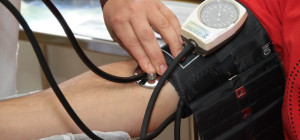 When an average individual or weekend athlete gets hurt, we go see a physical therapist. When a professional athlete gets hurt, though, recovery can be a more complicated process. After all, elite athletes don’t just want to regain basic function – they need to get back into peak condition. That’s why, when top players are injured, they go to the best.
When an average individual or weekend athlete gets hurt, we go see a physical therapist. When a professional athlete gets hurt, though, recovery can be a more complicated process. After all, elite athletes don’t just want to regain basic function – they need to get back into peak condition. That’s why, when top players are injured, they go to the best.
High-Performance Care
One of the most notable “High Performance” departments in the sports world doesn’t serve the MLB or the NFL. No, this department is dedicated to the U.S. Women’s National Soccer Team, and while they provide rehabilitative services, their work is more comprehensive and consists of three major specialties. Athletes treated by this program receive care from sports medicine professionals, sports science and performance experts, and undergo performance analysis. Just within the sport medicine subspecialty, athletes can access doctors, trainers, PTs, chiropractors, massage therapists, and more. No aspect of their care goes unattended.
With professional athletes, preventative PT is a top priority, and is dedicated to managing pain, identifying injuries, and building strength as needed to prevent future injuries. PT is also the first step in pain management for athletes. Proper stretching, massage, and chiropractic work all contribute to performance on the field and wellness off of it.
Preparing Performance Pros
Not every PT is prepared to work with elite athletes, and whether they pursue a DPT or MPT/MSPT, those who want to work with top athletes typically need additional training. Luckily, there are a number of new and exciting services available for addressing training gaps. One option for PTs interested in receiving advanced sports medicine education is to use VALT software from IPIVS to capture PT sessions performed by top sports trainers. Videos can then be replayed to students during talk-back sessions so that they can learn from and study these approaches.
In addition to pursuing supplemental training, high-performance PTs also need to be inventive in their approaches and able to work well as part of a team. As one of the PTs working with Olympic alpine skier Mikaela Shiffrin, for example, Regan Dewhirst says she is “constantly problem-solving and modifying the ‘off-hill’ plan” – taking what she knows and using it to address slight changes in posture or movement, compensate for and rehabilitate injuries, and of course, always communicating any additional health issues to other team members.
Part of what sets PTs working with professional athletes apart from the average provider is that they typically have access to more resources. This includes more comprehensive gym facilities and the ability to work with far fewer clients at any given time. But while these PTs may have more to work with, their greatest skill is their focus, commitment, and ingenuity, and of course their ability to work together with other PTs and medical providers. By combining their expertise, PTs can stay on the cutting edge and provide top athletes with the care they need to play at the highest level.




